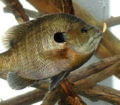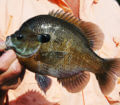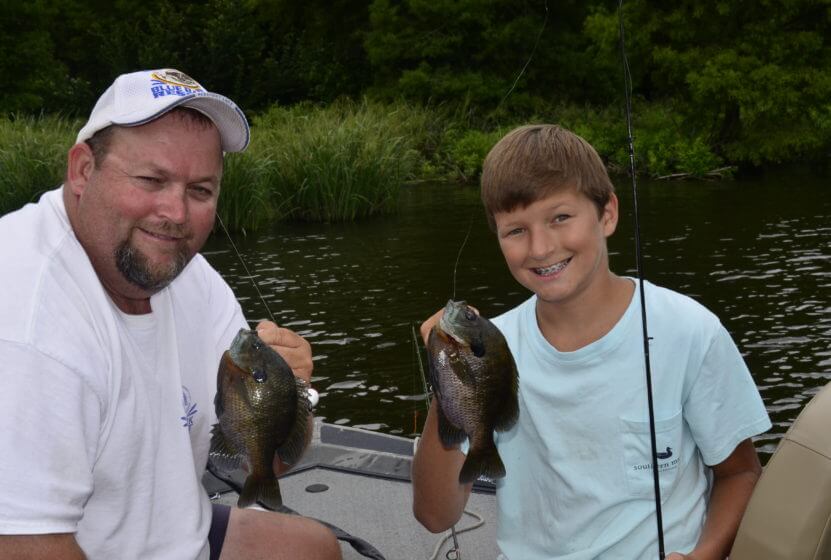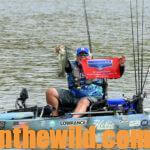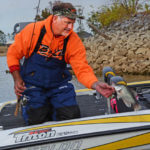John’s Note: Billy Blakely is the chief guide for Blue Bank Resort (http://www.bluebankresort.com – 877-258-3226) on Reelfoot Lake in northwest Tennessee. From May through October, Reelfoot is one of the premier bluegill fishing lakes in the nation. Because he’s been fishing and guiding all his life, Blakely has assumed through the years that he knows where every bluegill bed on the lake is located until recently when technology drastically has changed his ability to find and take bluegills.
 Once I learned what a bluegill bed looked like on a side-scanning depth finder and that usually more than one bluegill bed was in the same area, I decided to take some time off each day to look for more bluegill beds on Reelfoot Lake. I was amazed at how many bluegill beds I found out in deep water – well away from the bank. By being a guide who knew where 100 bluegill beds were, I thought that I was a knowledgeable bluegill fisherman. But in a short time, I learned that my side-scanning depth finder showed me at least 300 – 400 more bluegill beds out in open water that I never had seen or fished previously.
Once I learned what a bluegill bed looked like on a side-scanning depth finder and that usually more than one bluegill bed was in the same area, I decided to take some time off each day to look for more bluegill beds on Reelfoot Lake. I was amazed at how many bluegill beds I found out in deep water – well away from the bank. By being a guide who knew where 100 bluegill beds were, I thought that I was a knowledgeable bluegill fisherman. But in a short time, I learned that my side-scanning depth finder showed me at least 300 – 400 more bluegill beds out in open water that I never had seen or fished previously.
Another advantage to using the side-scanning depth finder is you can set the range as to how far from the center of the boat you want the side scan to cover. I keep my unit on 40 feet, which means I’m seeing a section of the bottom that’s 40 feet out on the right side of the boat and 40 feet out on the left side of the boat. Every 10 feet of the bottom that’s being scanned allows me to can see what’s in that 10 feet. I know that if I spot a bream bed on the right-hand side of the boat, and that bream bed is showing up between my 20-foot mark and my 30-foot mark, the bream bed is actually 25 feet off the right-hand side of boat. I can mark those beds as waypoints on my depth finder, or I can make a circle, relocate the bed, anchor down and begin to catch bluegills.
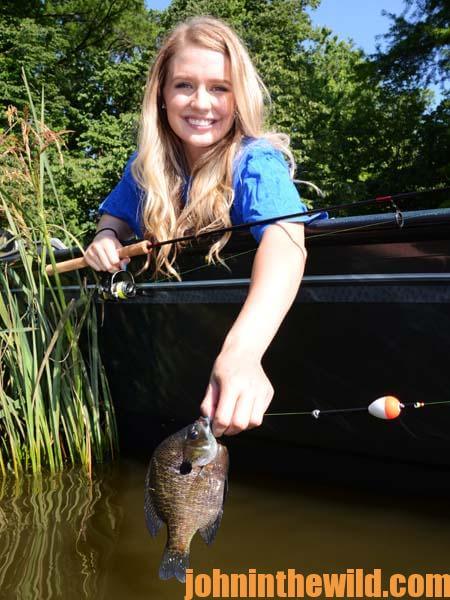 I’ve learned that usually more bluegill beds are out in open water than in the shallow water close to the shore. The bluegills will bed around a stump, a log, a tree limb or on a hump in open water. I catch most of my bigger bluegills where most bluegill fishermen have their boats anchored to fish the shallow-water beds that they can see, or have known about for years. I’ve also learned another trick when using the side-scanning sonar. Instead of having the transducer under the boat or on the foot of the trolling motor, I’ve built a lightweight aluminum bracket that I can attach to my boat. Then the bracket pulls the transducer about 6 feet out in front of my boat. Using this system, I can spot the bluegill beds, before the boat gets too close to them.
I’ve learned that usually more bluegill beds are out in open water than in the shallow water close to the shore. The bluegills will bed around a stump, a log, a tree limb or on a hump in open water. I catch most of my bigger bluegills where most bluegill fishermen have their boats anchored to fish the shallow-water beds that they can see, or have known about for years. I’ve also learned another trick when using the side-scanning sonar. Instead of having the transducer under the boat or on the foot of the trolling motor, I’ve built a lightweight aluminum bracket that I can attach to my boat. Then the bracket pulls the transducer about 6 feet out in front of my boat. Using this system, I can spot the bluegill beds, before the boat gets too close to them.
To learn more about bluegill fishing, go to www.amazon.com/kindle/author/johnephillips, and click on his Kindle eBook and print book, “Reelfoot Lake: How to Fish for Crappie, Bass, Bluegills and Catfish & Hunt for Ducks.”

